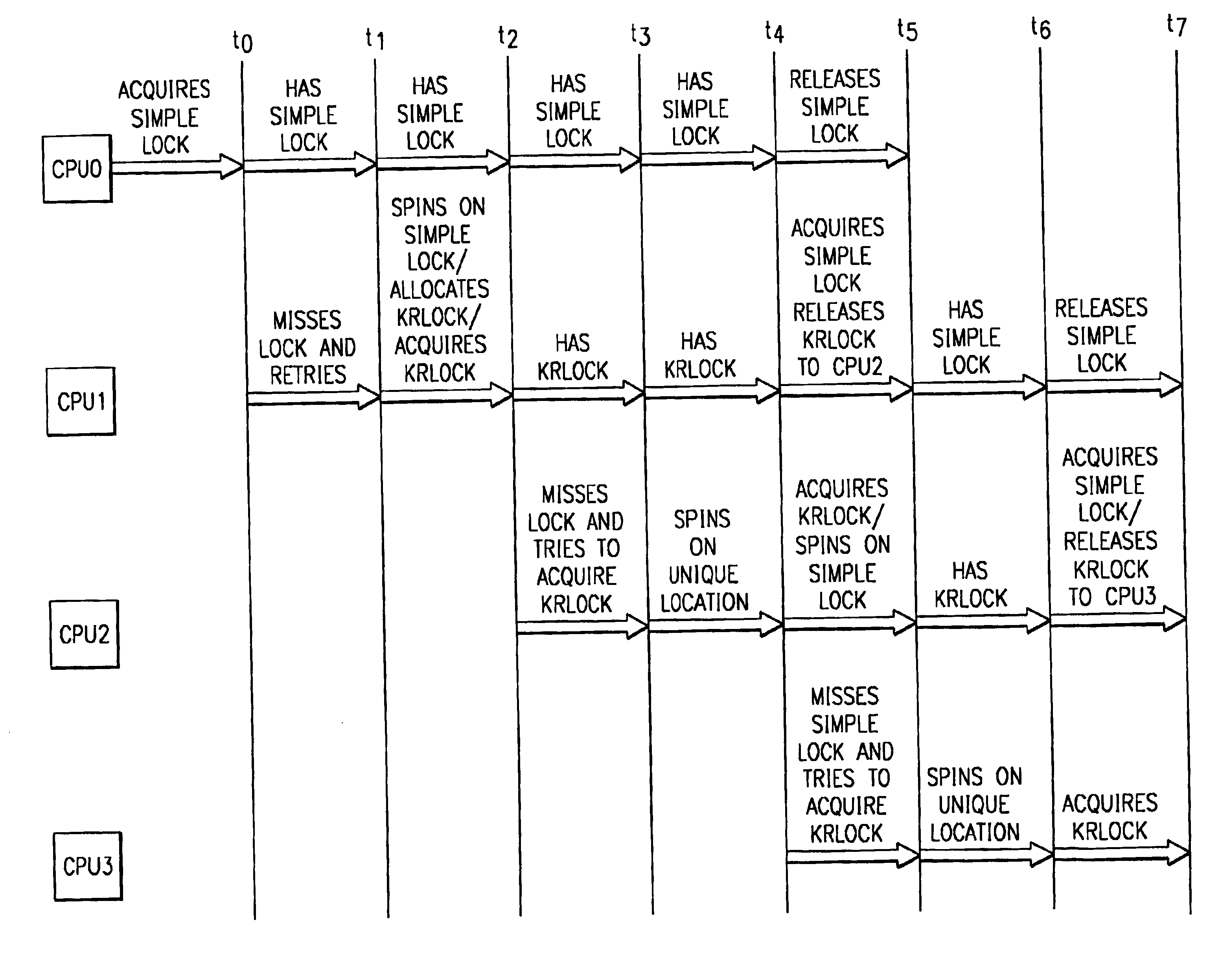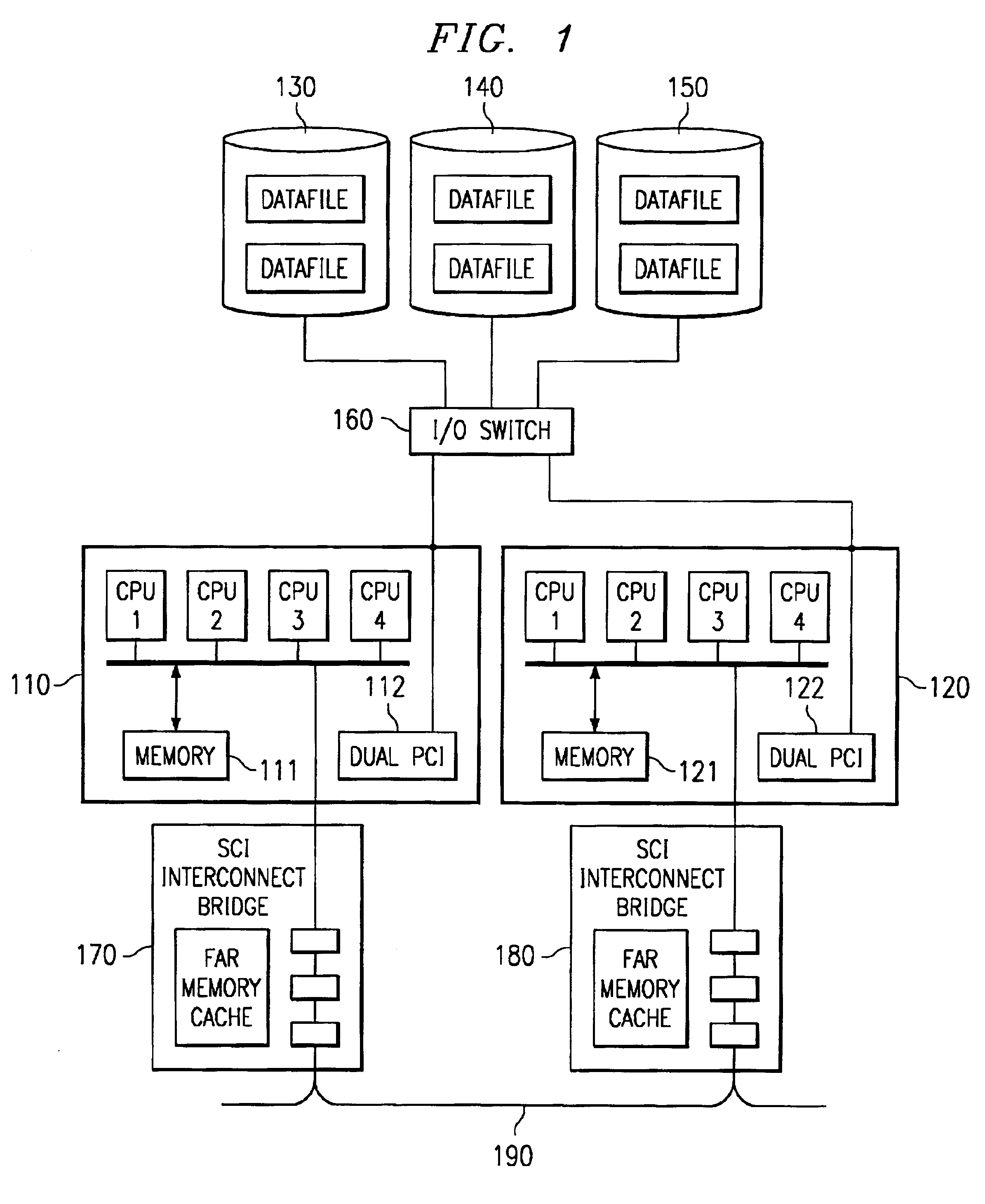Apparatus, method and computer program product for converting simple locks in a multiprocessor system
a multi-processor system and lock technology, applied in the field of apparatus, method and computer program product for converting simple locks, can solve the problems of increasing the potential for contention for a lock that protects a shared memory resource, the entire smp system, or node, going down, etc., and avoiding the extra overhead of krlocks. , the effect of avoiding starvation
- Summary
- Abstract
- Description
- Claims
- Application Information
AI Technical Summary
Benefits of technology
Problems solved by technology
Method used
Image
Examples
Embodiment Construction
With reference now to the figures, FIG. 1 is an exemplary block diagram of a multiprocessor system in accordance with the present invention. The particular example multiprocessor system 100 shown in FIG. 1 is a non-uniform memory access (NUMA) multiprocessor system, however, other types of multiprocessor systems may be used without departing from the spirit and scope of the present invention. The multiprocessor system 100 is only intended to be exemplary of the multiprocessor systems in which the present invention may be incorporated and is not intended to place any architectural limitations on the present invention.
As shown in FIG. 1, the NUMA multiprocessor system 100 includes a plurality of nodes 110 and 120 shared system resources 130-150, and an input / output (I / O) switch 160. The I / O switch 160 is a mechanism for providing pathways to the shared system resources 130-150 for the various nodes 110 and 130 of the multiprocessor system 100.
Each node 110 and 120 includes a plurality...
PUM
 Login to View More
Login to View More Abstract
Description
Claims
Application Information
 Login to View More
Login to View More - R&D
- Intellectual Property
- Life Sciences
- Materials
- Tech Scout
- Unparalleled Data Quality
- Higher Quality Content
- 60% Fewer Hallucinations
Browse by: Latest US Patents, China's latest patents, Technical Efficacy Thesaurus, Application Domain, Technology Topic, Popular Technical Reports.
© 2025 PatSnap. All rights reserved.Legal|Privacy policy|Modern Slavery Act Transparency Statement|Sitemap|About US| Contact US: help@patsnap.com



